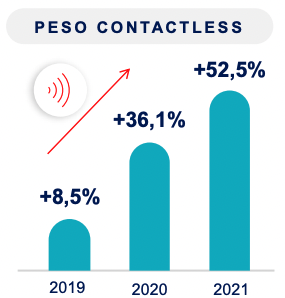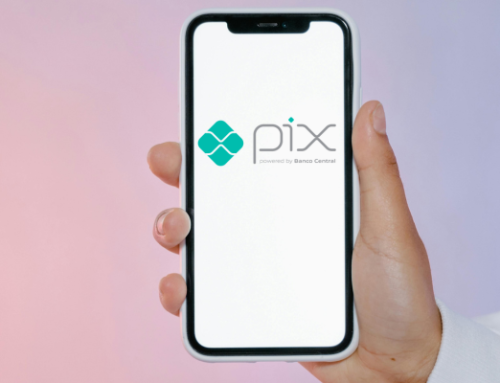
It's hard to imagine today that at the dawn of the first human societies, if someone wanted to "buy" eggs or a sheep, they had to give the seller not money but a good of equal value in return.
Despite being a distant image, direct exchanges are the first chapter in a history that has allowed the various human civilisations to organise themselves and develop over the centuries, first with the appearance of physical money and now with its dematerialisation through digital payment solutions.
Evolution of means of payment throughout history
Because trading cattle or taking tree trunks to a neighbouring region to exchange them for another good was, as you can see, an arduous and not very agile task, at the beginning of humanity it became common to use certain materials, above all silver, as an instrument of exchange, to which gold was later added and which would be the origin of the first coins as we conceive them today.
With the widespread use of coins, transactions became more convenient and quicker, leading to the advent of global trade and usury, which Aristotle, in his work "Politica", would consider to be "anti-nature".
We're only talking about coins, because in order to learn about banknotes we have to step into the time machine and travel back to the 9th century when, in China, the Tang dynasty government began to allow merchants to deposit bronze coins in the imperial treasuries, giving them in exchange for promissory notes payable at other treasuries.
This practice turned out to be extremely advantageous for everyone and there are records that indicate that something similar began to circulate in Europe too, between the 12th and 13th centuries, called bills of exchange, which facilitated trade on a continent with vibrant and already highly developed financial markets.
Eight centuries after this innovation from the "Middle Kingdom", the Bank of Stockholm, Sweden, issued Europe's first banknotes, while cheques were introduced by London bankers in 1780. From cheques, now almost out of circulation, to the credit cards it was a short hop with the American company Western Union creating the first credit card in 1914, made of metal (and therefore called metal money), which conferred deferred payment privileges.
It should be remembered that Western Union had already pioneered money transfers in 1871.
-
The birth of "plastic money"
36 years after the first credit card was created, an American businessman forgot his wallet at home. The embarrassment of this situation was so great that Frank McNamara, as the businessman called himself, ended up creating the Diner's Club International, a paper card that, when shown in restaurants and hotels, ensured the holder's liquidity. In 1958, the so-called "plastic money" was created by American Express, which brought the first card made from this material to the general public, revolutionising not only the way people paid but also the way they thought about consumption.
If the development of automatic payment terminals is umbilically linked to payment cards, the first twenty years after Diner's Club International and American Express launched the first bank cards in history were marked by a type of terminal that was "slightly" less automatic than the one we know so well today.
Unlike the TPA At the time, the cards were read without the use of the Internet and with the aid of carbon paper. The cards were embossed with all the financial information needed to carry out a transaction and, upon payment, the embossed information was then printed on a receipt with carbon paper by the merchant, which then had to be signed by the customer and sent to the banks.
Although physical cash was not used, the process was not very automatic and was very manual, clearly losing out to cash transactions.
It wasn't until the late 1960s, thanks to Forrest Parry, an IBM engineer, and his idea of attaching a piece of magnetic tape to a plastic card, that IBM was able to develop the IBM 360, a system that made it possible to configure external peripherals such as hardware and printers independently, and which enabled the first card readings in history, thus ushering in the era of electronic payment terminals.
Evolution was unstoppable and in 1977 the first wireless payment terminal appeared in Norway. Authored by Telenor Mobile, this terminal allowed vendors to accept bank card payments anywhere: in food carts, at fairs and even on beaches.
-
Automatic payment terminals arrive in Portugal
In 1986, the UNICRE – financial credit institution, creates the REDUNICRE brand, a payment acceptance network which began accepting the first debit card issued in Portugal, the Totta Gold Card, in commercial establishments.
In the 1990s, the brand REDUNICRE, now REDUNIQ, ended up making history by installing the first Electronic Payment Terminals in domestic shops, while in the US, the first purchase was made online.
These two aspects, payment terminals (TPA) e online paymentsIn the years that followed, they ended up converging to lead us to new forms of payment with the technological innovation that has swept our society in recent years.
-
Contactless and online payments
Thanks to the development of NFC (Near Field Communication) technology and the improvement of the Internet, payments have undergone a real revolution, which has led to the growth of contactless technology and online transactions.
In the case of contactless payments, one of the latest reports the knowledge solution REDUNIQ Insights made public in January this year, tells us that between 1 December and 2 January, these already accounted for 52% of the total transactions made on REDUNIQ's payment network, a figure that contrasts with the 36.1% and 8.5% recorded in the same period of 2020 and 2019, respectively. These figures not only prove the gradual consolidation of contactless payments, but also the growing adherence of the Portuguese to new ways of paying based on the use of smartphones or wearables.

Contactless Weight 2019-2020-2021 (Note: Data from 1 December to 2 January) Source: REDUNIQ Insights
With a track record that speaks for itself, REDUNIQ has not left its credit in this field by developing payment terminals (TPA) innovators who are helping to transform the payments landscape in Portugal.
A fine example of this is Android automatic payment terminal – REDUNIQ Smart which, in addition to accepting contactless payments by card, chip, MB WAY, Google Pay and Apple Pay, comes with a set of built-in management apps that support businesses and allow them to be totally mobile and digital.
By functioning as Contactless TPA and management centre connected to the digital world, this new REDUNIQ's TPA Android solution offers businesses extra flexibility in managing their resources, since, for example, with the ZS Mobile app a shopkeeper can register orders on the terminal, invoice (AT certification) or prepare quotes and orders even without an Internet connection, while with WinRest or ZSRest, a catering business can now display menus, register and confirm customer orders and even integrate its invoicing software into a single physical POS.
In the case of online paymentsAccording to data from the Digital Economy Association, in Portugal it was estimated that in 2020 the value of e-commerce would reach 8 billion euros, a figure that was initially highly exponentiated by the pandemic, but which with the passage of time and the adherence of more and more consumers to online shopping is set to multiply in the coming years.
Also in this field, REDUNIQ is innovating by providing companies operating E-Commerce platforms with the online payment solutions REDUNIQ@Payments e REDUNIQ E-Commerce which, among other things, allow businesses to receive online payments via e-mail, SMS or WhatsApp, by Multibanco reference, MB WAY or with Visa and Mastercard, in the case of the service @PaymentsE-commerce payments with debit and credit cards, Visa and Mastercard, from customers all over the world, with no membership costs or monthly fees, in the case of the REDUNIQ solution. E-Commerce.


